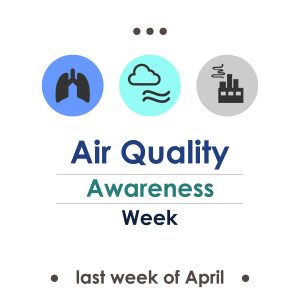20 Ways to Improve the Air Quality at Home
With Delhi coming up on top of the list as one of the most polluted cities in the world, the life-threatening problem of air pollution is finally receiving the media attention it deserves. But, did you know that if not carefully managed – the air inside your home can be just as, if not more, damaging to your health?
Indoor air pollution is a little known but highly dangerous phenomenon. It is especially in the winter season that pollutants, toxins and allergens peak. This is also known to happen when you renovate, paint a wall or buy new furniture.
The main strategies to employ when managing indoor air quality are three-fold:
 Manage the source: This tactic deals directly with the source of pollution, which could range from asbestos, gas emissions in your kitchen or that new sofa set you purchased.
Manage the source: This tactic deals directly with the source of pollution, which could range from asbestos, gas emissions in your kitchen or that new sofa set you purchased.
Ensure proper ventilation: Ventilation and ideal air circulation is crucial; one must be especially wary of outdoor allergens in the spring season.
Regulate levels of moisture: This is key to controlling the incubation of pathogens and subsequent spread of disease. Mildew and mold require humidity to thrive; aim to maintain the indoor humidity between 30% and 50% at all times.
Using the three-fold strategy, given below are tips to improve the air quality in your home:
- Cross-ventilation and air circulation: Enhance the circulation of outdoor/ indoor air by opening doors, windows, attic vents during the day. Do this even in the cold season, and especially during activities like painting, cooking or cleaning.
- De-humidifier: Buy and install a de-humidifier especially in highly moist zones such as the bathroom; this goes a long way in keeping at bay dust mites, mold, mildew and cockroaches.
- ‘Spring’ for cleaning every day: The importance of daily cleaning cannot be understated. Do not skip the hard-to-reach areas such as ceiling fans, tops of cupboards/refrigerators, etc. A damp cloth better than a feather duster, while a reusable microfiber dust mop is best. Making a ritual of cleaning and dusting helps eliminate dust bugs, allergens and irritants.
- Pets: Keeping your home free of hair and fur is non-negotiable, especially if you have a carpet. Disinfect areas where you pet has pissed or taken a shit. Wash and disinfect their food bowls and bedding regularly. Do not, at any cost, allow pets on your bed, bedsheet, blanket or pillow – this is totally unhygienic. Lastly, bathe your pets regularly.
- Renovation: When renovating or refurbishing, make indoor air quality a priority. Go with hard surface floors as opposed to carpeting, blinds over curtains, research and find low or no VOC (volatile organic compounds) paint and always include house plants.
- House plants: They have been scientifically proven to improve air quality indoors. Place and use them strategically and understand their requirements well.
- No smoking indoors: Smoking one cigarette alone can release around 4000 chemicals, and as these accumulate over time, they become impossible to get rid of, making your house a hazardous zone. Is this the air you should be breathing in?
- Air purifiers and filters: These are recommended but check to make sure they are the correct size for the room. Also, regularly replace filters in your heating/cooling systems so as to keep away contaminants. An electrostatic filter traps greater particulate matter than standardized filters.
- Fabric: Regularly dust, disinfect and sun-dry large pieces of fabric like curtains or bedding. When washing, use hot water as it is more effective in killing allergens. Wash all new fabric before use, including the clothing you buy, because attached to them are chemicals as a consequence of manufacture. Buy washable bedding.
 No shoes indoors: Do not allow outside footwear inside and maintain a separate pair for indoor use. Place foot mats at all entrance/exit doors and use them without fail.
No shoes indoors: Do not allow outside footwear inside and maintain a separate pair for indoor use. Place foot mats at all entrance/exit doors and use them without fail.- Candles, fresheners and fragrances: Be wary of artificial fragrances and ‘essential oils’ that come in the form of candles, air-fresheners, spraying chemicals and so on – they are highly dangerous. Use natural alternatives like a heated pot of cinnamon, or organic vaporizers and diffusers. Always purchase non-toxic, non-fragrant candles.
- Natural cleaners: Some ingredients that hold natural cleaning abilities are – tea tree oil, lemon juice, vinegar (distilled), baking soda, hot water, olive oil and turmeric. If you want to purchase something in a tin, packet or can regardless, keep in mind the thumb rule that less is more in terms of the number of ingredients mentioned on the label.
- Exhaust: Under any circumstances, do not idle vehicles, engines or other appliances indoors. Ensure the exhaust of all fuel-burning appliances (furnace, fireplace) have their vents to the outside.
- Moisture: Do not put off repairing leaks, run bathroom fans when showering and manage dampness without delay. Dampness can cause wheezing, coughing and asthma.
- Vacuum cleaner: Do solid research and buy a vacuum with powerful suction, rotating brushes and a HEPA filter.
- Non-living things: Contrary to common understanding, non-living things like furniture will off-gas chemicals throughout our use of them. Do your research and purchase items with low or no VOCs. Avoid conventional wood like particleboard or plywood, especially those treated with glues, chemicals, formaldehyde, paints, lacquers and/or varnish. All of these are carcinogenic.
- Safe paint: Have you ever entered a freshly painted room and been enveloped by the smell that has a kind of dizzying effect? That’s chemicals at their best. Always opt for paints with low or no VOCs.
- Dry cleaning: Air them outdoors for some time before bringing the batch in, they contain toxic chemicals collected during the process.
- Kitchen: Just cooking one meal can emit levels of nitrogen oxide that are harmful to your health. Proper ventilation and exhaust fans when cooking is non-negotiable.
- Bedroom: Daily exposure to chemicals and toxins in your bedroom (from bedspreads, linen, textiles, carpets, mattresses and other furniture) while you sleep are a significant cause of indoor air pollution. Prioritize non-toxicity in your purchases.
 Adhering to the above tips will help you manage indoor air pollution. Other specific situations during which you must exercise additional caution are: paint stripping, painting, cooking, welding, gluing, soldering, sanding, polishing, heating and other maintenance activities. Conduct these outdoors, preferably.
Adhering to the above tips will help you manage indoor air pollution. Other specific situations during which you must exercise additional caution are: paint stripping, painting, cooking, welding, gluing, soldering, sanding, polishing, heating and other maintenance activities. Conduct these outdoors, preferably.
A comprehensive guide to indoor air quality: https://www.cpsc.gov/Safety-Education/Safety-Guides/Home/The-Inside-Story-A-Guide-to-Indoor-Air-Quality












































